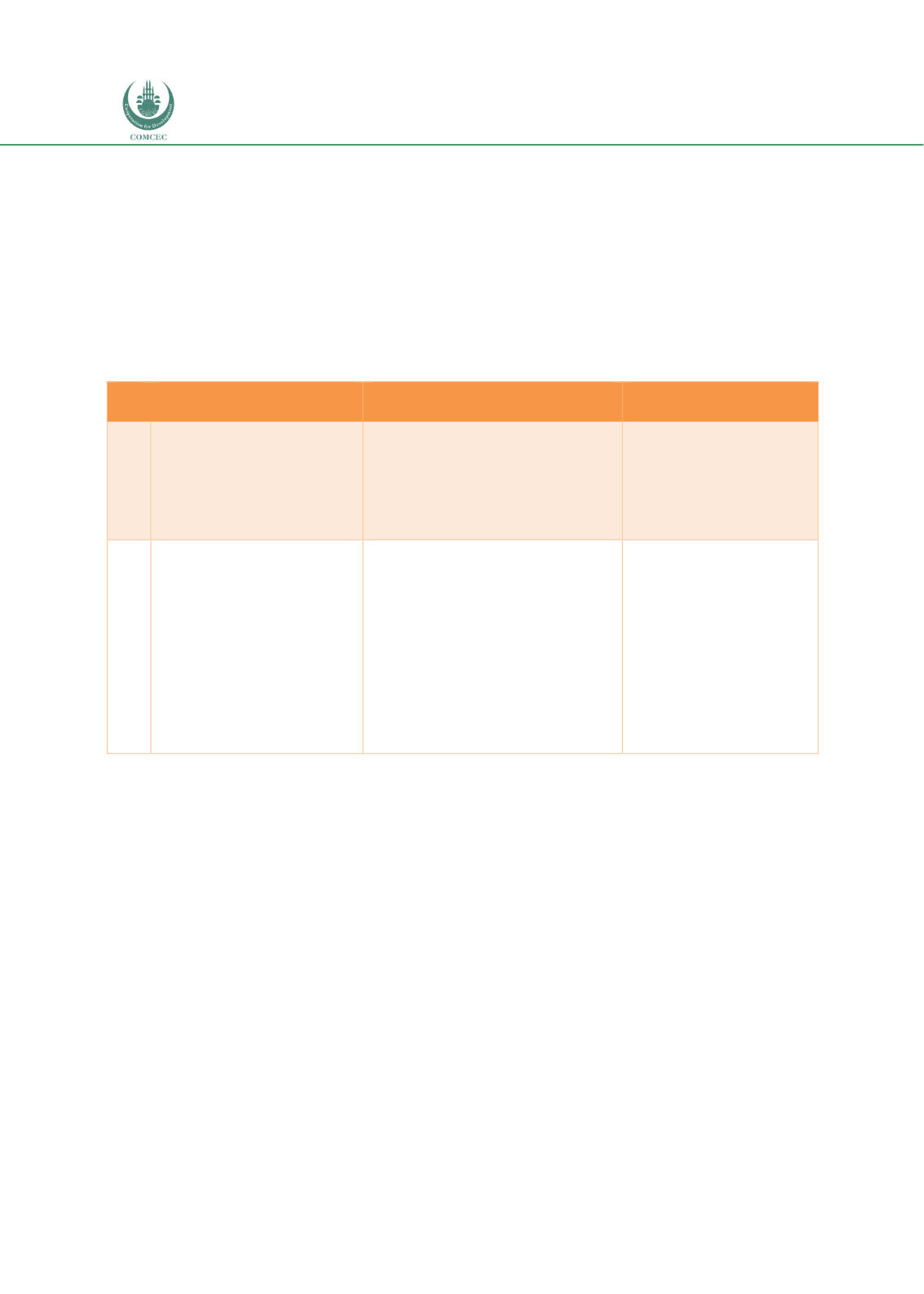

Infrastructure Financing through Islamic
Finance in the Islamic Countries
176
For Islamic banks, an additional problem is in the fact that in most countries their sizes are
relatively small. As such, they have a limited capacity to invest in large infrastructure projects.
Due to their small sizes, one option for Islamic banks is to provide project financing using
syndicated finance. Examples in which this has been done include the USD 50 million provided
by Islamic banks for the Master Wind Energy Limited project in Pakistan and the larger USD
422 million Doraleh Container Terminal Project financing done by Dubai Islamic Bank and
others in Djibouti. Since syndicated financing involving Islamic and conventional banks
requires complex contractual arrangements, there is a need to develop templates of contracts
to facilitate Islamic banks to finance infrastructure projects.
Table 5. 5: Policy Recommendations for Islamic Banks
No. Recommendations
Specific Steps
Implemented by
4.1 Increase Islamic banks’
roles in infrastructure
investments
Increase the share of
financing in infrastructure
projects
Develop long-term restricted
investment accounts
Invest in project
sukuk
Islamic banks
Regulatory bodies
4.2 Provide a better
supportive environment
for Islamic banks to
facilitate infrastructure
investments
Develop a well-functioning
Islamic money market
Develop templates of Shariah-
compliant contracts for
syndicated financing that
involve both Islamic and
conventional banks
Provide a better regulatory
framework for capital
requirements for
infrastructure investment
Industry players
Relevant
government
ministries
5.5.
Islamic Nonbank Financial Institutions
Other sources of finance for infrastructure finance can come from a variety of nonbank
financial institutions such as insurance/takaful, pension funds, and sovereign wealth funds.
Although the structure of the balance of family takaful companies makes it easier for them to
invest in long-term assets, the information on the asset distribution of takaful companies in the
countries examined in the study do not reveal specific information on the investments in the
infrastructure sector. For example, the bulk of the assets (43.7%) held by the takaful sector in
Sudan is in land and real estate, followed by bank deposits (29.6%), stocks (14.9%) and sukuk
(8.2%). While part of the sukuk issued by the government is likely to be used in infrastructure
projects, direct investments in the sector are not revealed in the data.
A key source of funds for infrastructure projects can be pension funds. While pension funds
exist in most countries, these are not Shariah-compliant. However, in some countries, parts of
the investments make use Shariah-compliant instruments. For example, 45% of the AUM
worth RM266.5 billion of Malaysia’s largest retirement fund EPF was Shariah-compliant in
2016, and Malaysia’s public services pension fund Kumpulan Wang Amanah Pencen (KWAP)
















